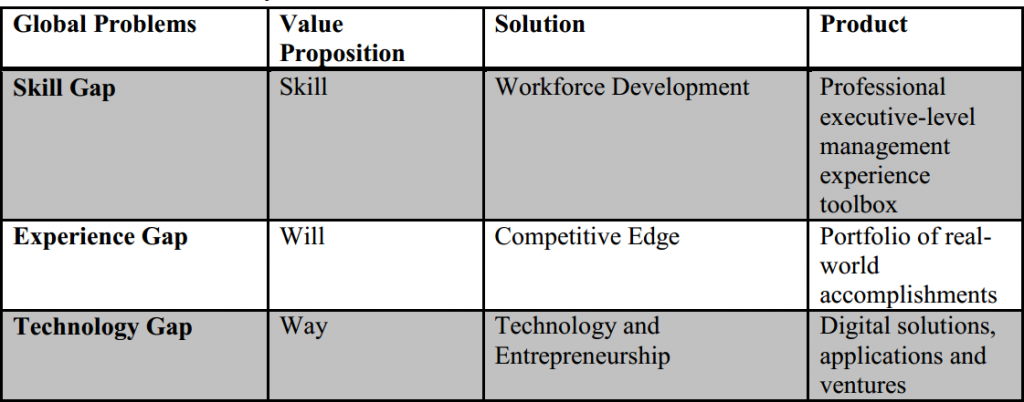Statement of Purpose: Architecting an enterprising culture of innovation by re-engineering everyday people into self-actualized, value-driven, global visionaries determined to deliver economically impactful solutions that generate markets, enterprises, and wealthy communities through science and technology.
We do this through a global distributed federated ecosystem of networked innovation accelerators (XStudios) and incubators that puts powerful servers in the hands of youth and professionals who can develop revenue-generating applications while learning professional executive-level skills and launching enterprises.
These XStudios are made up of technology, partners, students, sponsors based in Africa, the Caribbean and North America. We are going to build three primary hubs with a primary hub in each region. Africa is based in Johannesburg, South Africa* the Caribbean is based in Port of Spain, Trinidad (Universidad de Trinidad)** and North America is based in Cambridge(MIT)***.
Robert Robinson Taylor is the first known black graduate of MIT. He graduated in 1892 and went on to become the first professionally-educated, black architect in America and the main architect of the Tuskegee Institute in Tuskegee, Alabama. He designed the Booker T.Washington Institute in Liberia. Known as the “MIT Architect of the South”, Robert Robinson Taylor transferred MIT’s learn-by-doing and math and science foundational core to create the School of Mechanic Industries at Tuskegee, known today as the Combined School of Architecture and Engineering, to train recently freed black slaves of high school age the professional trades of architecture, construction and mechanics. The architectural program had students assist in the design and construction of the campus. These students later became architects, doctors, engineers and business owners.
RRTN seeks to address the skill gap, experience gap and technology gaps of underrepresented populations in the architecture, science, technology, and engineering fields by developing the skill, the will and the way:
Market Problem: Minority populations are severely underrepresented in educational fields, specifically ASTEM majors.
Process: To combine the studio and professional experiences to deliver technology solutions and build businesses in order to create a personal portfolio of delivered work in the real world. Partners: RRTN is a registered ISV partner of Intuit, IBM, and Lenovo and collaborates with other leading research-based institutions such as MIT, Tuskegee University, and Hampton University.
Practice: Revenue-generating and semi-independent networked innovation studios which accelerate and incubate disruptive business technologies.
Platform: A commerce-based state-of-the-art application development and deployment technology bundle of powerful, industry-grade open-source hardware, software and cloud services allowing communication, collaboration, commerce and end-to-end digital business development. The bundle integrates MIT open education software, business technologies, open- source applications, mobile tools and devices, and hybrid standalone and network solutions.
Quantifiable Benefits: An increased number of underrepresented talent entering ASTEM majors and careers. Moreover, these individuals are more employable and make more money than their peers. President Obama has identified STEM education as a primary national need. Our primary data sources are going to be the World Bank, NSF data, BHEF, and the CSST/NIHERST.
*with regional subhubs: Central (Chad), East (Nairobi, Kenya), West (Ghana, Liberia – Booker T. Washington University), North
**with regional subhubs: American, Dutch, UK, French, Spanish
***with regional subhubs: South, North, East, West
Criteria: Taylor connection, MIT/Tuskegee relationship/experience, alumni leaders, (economic, political, energy infrastructure), stability, partners, primary university research level, urban center




